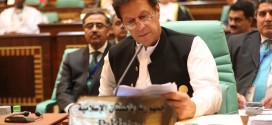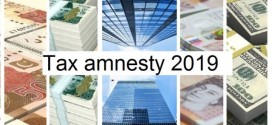WHERE DOES THE PROBLEM LIE?
Pakistan’s association with the IMF dates back to 1980s when the agency started to play an increasingly important and assertive role in our economic policies. The IMF was created with the purpose to preserve the post-Second World War international economic order and in the process, oversee that industrialised states do not engage in competitive devaluation which caused much of the economic crisis of the 1930s. Though the IMF evolved to regulate the (im)balance of payments problems that states face yet, over the years, it has acquired a more assertive and aggressive tone particularly in the area of determining economic policy choices. Under Article IV of the IMF’s Articles of Agreement, the IMF holds bilateral discussions with member countries usually every year. A staff team visits the country, collects economic and financial information and discusses with officials the country’s economic development and policies.
The IMF doles out what is regarded as a ‘stabilisation’ programme for countries which face macroeconomic instability, that is, high inflation and severe budget and foreign payments deficits. A state’s negotiation with the IMF revolves around executing policies which are labelled as ‘conditionalities’. These conditionalities are imposed on the state receiving IMF loans and, in particular, comprise the implementation of these policies:
Most of these policies proved quite unpopular in most countries where these had been tested. This is so because the primary thrust of IMF’s policies is not geared toward ensuring development of the aid-receiving state rather it is to oversee that such state continues to pay back the international loans accruing to it. During the 1980s, the IMF strategy was tested in 28 of the 32 nations of Latin America and the Caribbean. The results revealed that though Latin America had performed more than reasonably well in paying back its debts (around $145 billion) yet the economic costs were tantalising including economic stagnation, rising unemployment and a decline in per capita income of 7%.
Pakistan first went to the IMF in 1980 when an ‘Extended Fund Facility’ was made available. Many leading and well-reputed economists still believe that when the IMF facility was provided for Pakistan, it was not really needed. Akbar Zaidi has argued that Pakistan’s economy was in a far better shape than any other developing country and was not on the brink of an economic crisis or collapse during the 1980s. Comparing Pakistan with Bolivia, which accepted the IMF stabilisation programme, Zaidi notes that the latter had an inflation rate of 11 per cent and a fiscal deficit in excess of 30 per cent of GDP. Pakistan’s economy, on the other hand, was (and one may add, still is) in fairly good shape provided that important steps are taken in order to boost revenues. At present, Pakistan owes the IMF about $8 billion: $1.8 billion is due to be paid in 2012, $3.9 billion in 2013 and $2.1 billion in 2014. It is quite evident that Pakistan has to repay around $8 billion in almost two and a half years which makes it imperative that a new deal with the IMF is signed in order to buy more time. But this generates a paradox: you borrow in order to retire the loan, which means that you are being burdened by debt after debt after debt. This approximates the example of an individual who seeks loan from one bank in order to pay another. Considering that no drastic increases are accruing in the said individual’s income, he/she is forced to live in a burden of lifetime debt. Where is the sense in all of this?
Coming to the policy prescriptions, Pakistan was advised by the IMF in 1980 to devalue the rupee against the dollar, reduce government expenditures, establish tax reforms to increase domestic resource mobilisation, encourage savings, institute price reforms and push for export-led growth and privatisation. Most of such measures are policies with which most political economists, simply, don’t disagree. Yes, they would criticise reduction of government expenditures as leading directly to curtailment of social welfare programmes (such as investments in health and education) and privatisation which leaves the middle-class employed on the whims of the market and its functioning with no social security net once they are rendered unemployed. But who would disagree with IMF’s policy prescription to increase the tax base or encourage savings or even competitive devaluation?
The government’s inefficiency in raising revenues and curtailing wasteful expenditure is the root cause of all the fiscal ills and woes which plague the country. By wasteful expenditure is meant money that goes under the head of corruption. This wasteful expenditure sits side by side with debt servicing which has eaten up one-third of the budget. The present budget outlines that the government will spend Rs. 1.1 trillion–or more than one-third of its outlay–on servicing both domestic and foreign debts. Debt servicing and defence expenditure (which the finance minister put at 18.4 per cent), jointly take away major chunk of the budget and almost 48 per cent only is left for running the country. This is still quite a handsome figure, however, figures hardly are the right source to celebrate or denigrate a country’s economic performance. It is the ‘performance’ itself which counts and the fundamental requirement for effective ‘performance’ is essential economic reforms, including the implementation of agri tax. It is the government of Pakistan, not the IMF, which is responsible for the poor state of our economy. Before going to the IMF, we need to put our own house in order first. If we don’t, we will continue to flounder in a sea of economic woes!
 Jahangir's World Times First Comprehensive Magazine for students/teachers of competitive exams and general readers as well.
Jahangir's World Times First Comprehensive Magazine for students/teachers of competitive exams and general readers as well.


